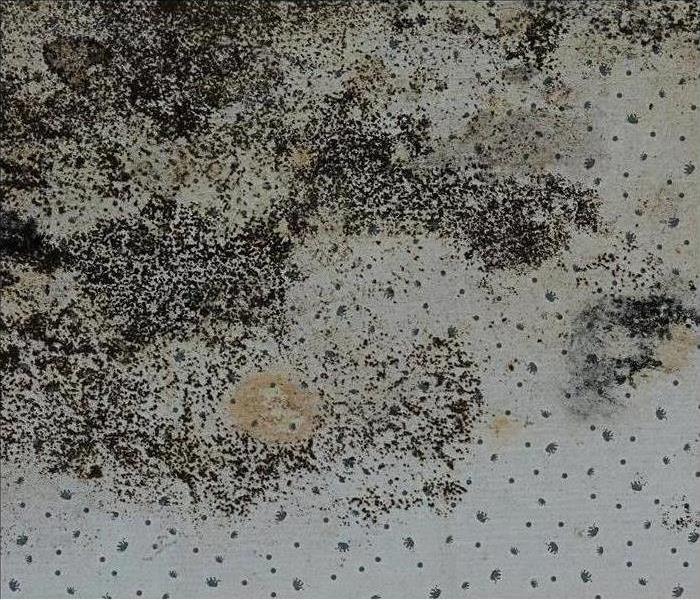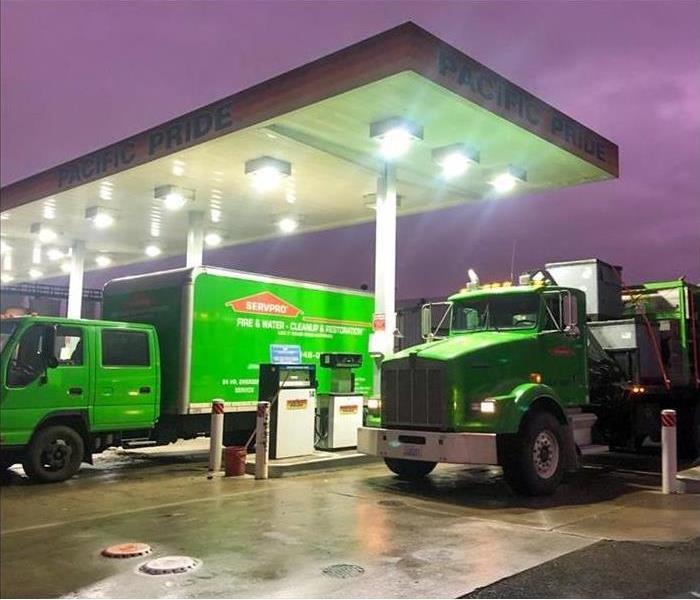3 Differences Between Mold and Mildew
9/12/2022 (Permalink)
 Call SERVPRO! We are mold experts.
Call SERVPRO! We are mold experts.
Mold and Mildew: What's the Difference?
The terms mold and mildew are often used interchangeably, but there are significant distinctions between these types of fungi. In the most general sense, mold grows on moist organic surfaces whereas mildew is a parasitic fungus that grows only on living plants. If you want to seek an expert opinion concerning the extent of mold growth or mildew growth or mold damage in your home, you should call a certified service specializing in testing, clean-up, and restoration in Enumclaw, WA.
1. Mildew is a type of fungus. This obligate plant parasite grows on living plants and is recognizable by its white or light gray appearance. Mildew is very common and does not pose the same risks as mold.
2. Mold requires a combination of moisture and organic material to grow. Mold may appear in a variety of different colors. Even white or light gray growths on surfaces that are not plants are mold, not mildew. You should contact a mold damage expert if you find or suspect that mold is present in your home.
3. Mildew can be either powdery or downy in appearance. Powdery mildew is a fungal disease that causes powdery spots or patches to appear and grow until they form a coating over the surface of the leaves of a plant afflicted with mildew. Downy mildew is visible along the undersides of leaves and may feature small black spots or cause leaves to become discolored.
It is easy to distinguish between mold and mildew once you know that mildew affects plants. If you are concerned about mildew growth, you may want to try removing and destroying affected portions of a plant, improving air circulation, changing the direction from which you water, or using a fungicide. If you see or suspect mold growth, contact a company that tests for mold and cleans up residential mold damage in Enumclaw, WA.
What To Expect After Contacting SERVPRO
2/3/2022 (Permalink)
 If you've recently experienced damage to your Oceola, WA property and are in need of a restoration company near you, look no further than SERVPRO.
If you've recently experienced damage to your Oceola, WA property and are in need of a restoration company near you, look no further than SERVPRO.
What To Expect When You Call SERVPRO
If a client has suffered damage to his or her Oceola, WA home, it is important to act quickly. SERVPRO’s 24 hour availability makes them a top choice for many insurance agencies. Here is what you can expect during the first several hours after contacting the restoration company.
1. A Quick Response
When a building has been damaged, the response time is an important factor in how time-consuming and how costly restoration will be. SERVPRO is always open, so you can expect to hear back within an hour after you have contacted them about the emergency. Once you have provided them with the necessary information, they will begin preparing to address the needs of your client.
2. Arrival to the Damaged Site
With over 1,700 locations, SERVPRO can arrive quickly to any emergency. They can be on site to begin the restoration process within four hours. This fast response can make a huge difference if your client’s home has suffered a great deal of damage. Beginning the process more quickly will result in less damage overall which can end up costing the insurance agency less money.
3. Inspection and a Verbal Briefing
Once the damage restoration specialists have arrived, they can inspect the home to determine the extent of the damage and decide on the best course of action moving forward. This should all happen within eight hours of your initial call. They will provide a verbal briefing so that you and your client are aware of what will happen next. Their quick 24 hour response will allow them to begin mitigation as soon as possible to prevent any further damage before they begin work on necessary repairs.
Because it can spread and worsen quickly, the 24 hour period after damage has occurred is crucial. SERVPRO’s fast response will save the agency money and allow your client to have their home back sooner.

 24/7 Emergency Service
24/7 Emergency Service

